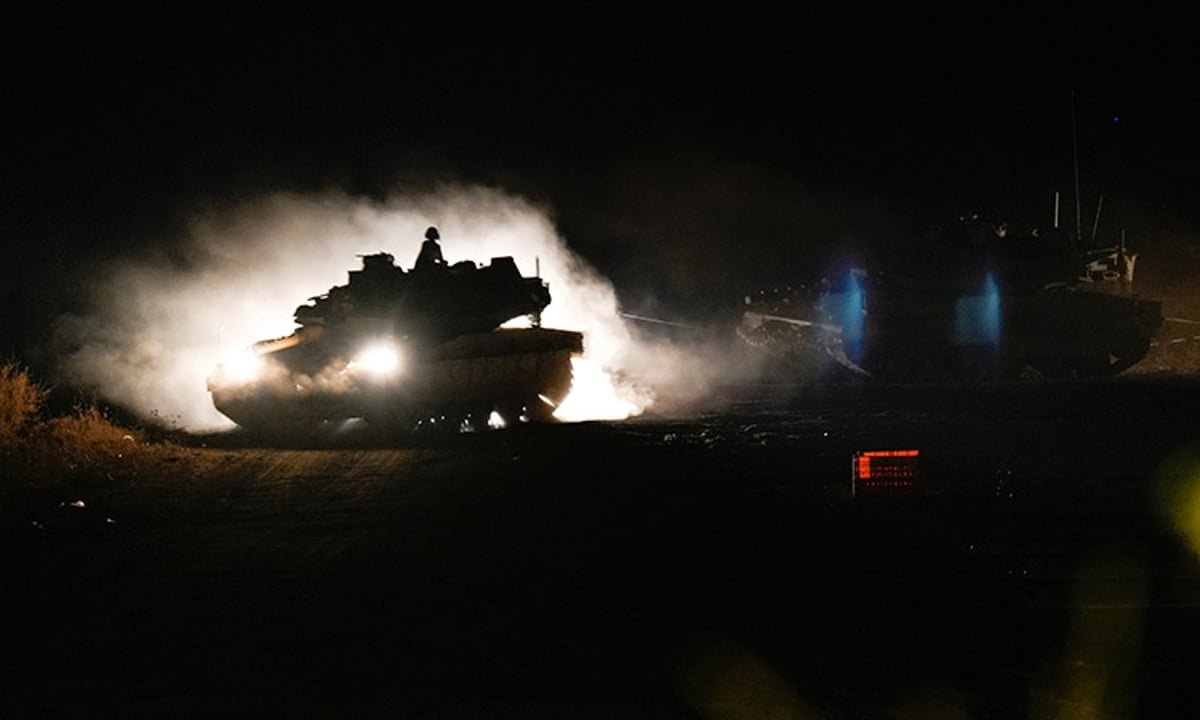
JERUSALEM — Israeli ground forces crossed into southern Lebanon early Tuesday, marking a significant escalation of an offensive against Hezbollah militants and opening a new front in a yearlong war against its Iranian-backed adversaries.
The incursion follows weeks of heavy blows by Israel against Hezbollah — including an airstrike that killed its longtime leader, Hassan Nasrallah — and seeks to step up the pressure on the group, which began firing rockets into northern Israel after the start of the war in Gaza. The last time Israel and Hezbollah engaged in ground combat was a monthlong war in 2006.
Also read: Hezbollah leader vows retaliation against Israel for attacks on devices as both sides trade strikes
The Israeli military said in a brief statement that it began “limited, localized and targeted ground raids” against Hezbollah targets in southern Lebanon.
“These targets are located in villages close to the border and pose an immediate threat to Israeli communities in northern Israel,” it said.
There was no word on how long the operation would last, but the army said soldiers had been training and preparing for the mission in recent months. Israel has said it will continue to strike the group until it is safe for displaced Israelis from border communities to return to their homes.
Ahead of the Israeli announcement, United States officials said Israel launched small ground raids inside Lebanon, and Israel declared three small border communities to be a “closed military zone,” restricting access only to army personnel.
There were no reports of direct clashes between Israeli troops and Hezbollah militants. But throughout the evening, Israeli artillery units pounded targets in southern Lebanon and the sounds of airstrikes were heard throughout Beirut.
Smoke rose from the capital’s southern suburbs, where Hezbollah has a strong presence, shortly after Israel ordered residents of three buildings to evacuate.
Israel launches risky phase of fighting
Israel has been emboldened by its recent battlefield gains against Hezbollah and appears intent on delivering a knockout blow to its archenemy. But a ground operation marks a new and potentially risky phase of fighting. It also threatens to unleash further devastation on Lebanon, where hundreds have been killed in recent Israeli strikes and hundreds of thousands have been displaced.
Hezbollah is a well-trained militia, believed to have tens of thousands of fighters and an arsenal of 150,000 rockets and missiles. The last round of fighting in 2006 ended in a stalemate.
Both sides have spent the past two decades preparing for their next showdown. While Hezbollah has built up a formidable arsenal, Israel has invested great sums into training and intelligence gathering.
Recent airstrikes wiping out most of Hezbollah’s top leadership and the explosions of hundreds of pagers and walkie-talkies belonging to Hezbollah indicate that Israel has infiltrated deep inside the group’s upper echelons.
Hezbollah vowed Monday to keep fighting even after its recent losses. The group’s acting leader, Naim Kassem, said in a televised statement that Hezbollah would be ready for a ground operation. He said commanders killed in recent weeks have already been replaced.
The man widely expected to take over the top post from Kassem is Hashem Safieddine, a cousin of Nasrallah who oversees Hezbollah’s political affairs.
Israel shifts attention from Gaza to Lebanon
Israeli strikes in recent weeks have hit what the military says are thousands of militant targets across large parts of Lebanon. Over 1,000 people have been killed in Lebanon in the past two weeks, nearly a quarter of them women and children, according to the Health Ministry.
Early Monday, an airstrike hit a residential building in central Beirut, killing three Palestinian militants, as Israel appeared to send a message that no part of Lebanon is out of bounds.
Israel declared war against the Hamas militant group in the Gaza Strip after Hamas’ cross-border attack on Oct. 7, 2023, that killed 1,200 Israelis and took 250 others hostage. More than 41,000 Palestinians have been killed in Gaza, and just over half the dead have been women and children, according to local health officials.
Hezbollah began firing rockets into Israel on Oct. 8 in solidarity with the Palestinian militant group.
Israel and Hezbollah have exchanged fire almost every day since then, coming close to a full-fledged war on several occasions but stepping back from the brink.
In recent weeks, Israel’s war against against Hamas has scaled back and it turned its focus northward toward Lebanon, stepping up the attacks on Hezbollah.
Israeli leaders say they want Hezbollah to implement the U.S. resolution that ended the 2006 war, which required the group to withdraw some 20 miles (30 kilometers) from the Israeli border.
Key setbacks for Hezbollah
Hezbollah has suffered key setbacks in recent weeks. Before Nasrallah’s assassination, a series of mysterious explosions of pagers and walkie-talkies blamed on Israel killed or wounded hundreds of people, many of them Hezbollah members. And Israeli airstrikes have killed most of the group’s senior commanders.
But Hezbollah continued to launch rockets and missiles into Israel and is still believed to have thousands of fighters near the Israeli border.
Israeli leaders for years have accused Hezbollah of hiding weapons and fighters inside homes and other civilian structures in border villages. Tens of thousands of Lebanese civilians have fled southern Lebanon in recent weeks fearing an Israeli military onslaught.
Hezbollah has few air defenses, giving the Israeli air force freedom of action over Lebanon’s skies. But a ground operation will be much more challenging, with Hezbollah forces embedded and hiding in local communities and familiar with the local terrain.
Still, Hezbollah’s capabilities are unclear. It’s possible Hezbollah is holding back to save resources for a bigger battle. But the militant group might also be in disarray after Israeli intelligence apparently penetrated its highest levels.
Some European countries began pulling their diplomats and citizens out of Lebanon on Monday. Germany sent a military plane to evacuate diplomats’ relatives and others. Bulgaria sent a government jet to get the first group of its citizens out.
Israel has a long and bloody history in Lebanon. It briefly invaded in 1978 in a strike against Palestinian militants. It invaded again in 1982 in an operation that turned into an 18-year occupation of southern Lebanon.
The stepped-up action against Hezbollah also could raise the risk of a broader region-wide war as Israel confronts a series of foes backed by archenemy Iran.
Israel carried out an airstrike in Yemen against the Houthi militia in response to a series of missile strikes. Israeli Prime Minister Benjamin Netanyahu has also threatened Iran, warning the Tehran government that Israel is capable of striking anywhere in the Middle East.
The United States and its allies — including France, which has close ties to Lebanon — have called for a cease-fire, hoping to avoid further escalation that could draw in Iran and set off a wider war. But Netanyahu has shown little interest, as his country racks up military achievements against a longtime foe.
French Foreign Minister Jean-Noël Barrot, visiting Beirut on Monday, urged Israel to refrain from a ground offensive. He also called on Hezbollah to stop firing on Israel, saying the group “bears heavy responsibility in the current situation, given its choice to enter the conflict.”
Lebanese Prime Minister Najib Mikati, speaking after meeting with Barrot, said the country is committed to an immediate cease-fire followed by the deployment of Lebanese troops in the south, in keeping with a United Nations Security Council resolution that ended the 2006 war but was never fully implemented. (AP)
Related stories: Israel-Lebanon war







